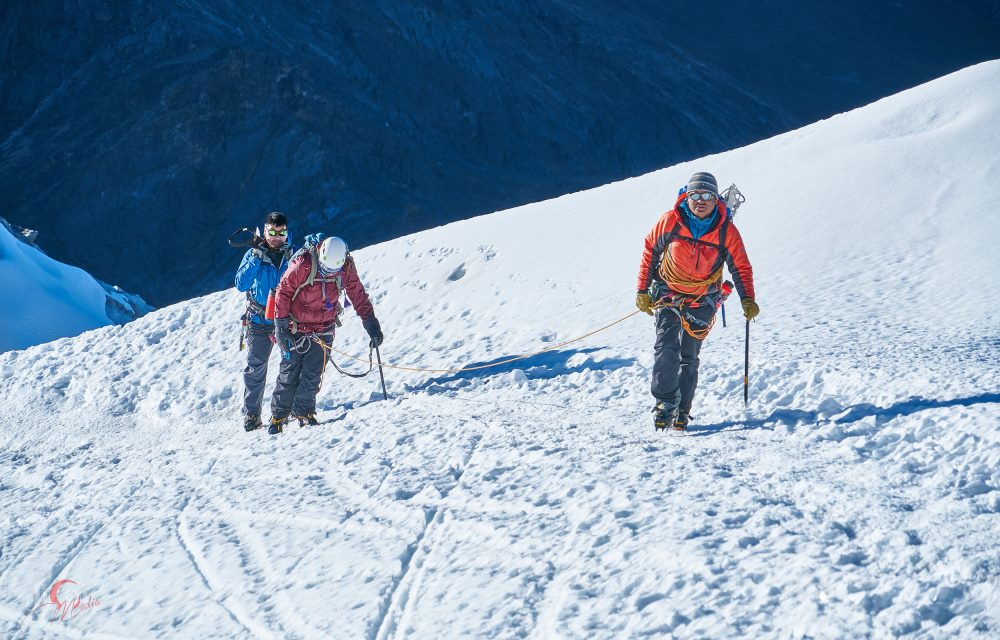Having been born and brought up in India’s North East, Bhutan, which is a close door neighbouring country and shares the international boundaries with Assam, right from my childhood the Himalayan kingdom of Bhutan fascinated me, particularly their belief in Buddhism, concern for the environment and preserving their ancient culture at any cost.
As a much-published travel writer, I hope to awaken the spirit of wanderlust and the global attention that Bhutan is right now receiving for its revolutionary stance on “Gross National Happiness” instead of the more acceptable “Gross Domestic Product” by introducing the thoughts and opinions of a legendary Himalayan Sherpa – Ang Tshering Lama, who knows the Himalayas by the tip of his fingers.
I have known Ang since my childhood days in India’s remote North Eastern state of Assam. We grew up together in a boarding school – (Carmel Residential School) in the quaint Assamese town of Tezpur. He has summitted Mt.Everest multiple times and holds to his credit the mantle of conducting the world’s highest rescue mission on Mt.Everest in the year 2017.
According to Ang, who himself is a die-hard Buddhist –“ Bhutan has for a long time been following the policy of “Isolationism” in its attempts to safeguard traditional Bhutanese culture. As a Sherpa, it feels my heart with joy when I see a small Himalayan kingdom putting Happiness in front rather than Capitalism. This not only requires guts to implement but also speaks volumes about the moral backbone of the Bhutanese society. Tomorrow if Bhutan were to open up its tourism sector to globalization, the country for sure will be earning Megabucks from day one, given the plethora of unexplored mountain peaks and the intrinsic Himalayan landscapes that remains an enigma for today’s discerning international traveller”.
Well then, that’s pretty Sherpa-like, ain’t it? – pragmatic, no-nonsense, and to the point.
Ang the mountaineer further adds – “Due to Bhutan government’s regulations in place, the number of visitors to Bhutan is pegged at around 40,000 whereas neighbouring Nepal receives close to a million visitors. What impresses me the most about Bhutan is that the cultures of begging and touting that predominantly germinate and grow around popular tourist hubs have no place in the Himalayan kingdom. How many countries on Planet Earth can you imagine where the government sets up a stringent Minimum Spending Requirements for visitors? Truly extraordinary”!
Bhutan is the seat of Vajrayana Buddhism and according to my mountain buddy Ang – Although the Vajrayana school of Buddhism had its origins in Tibet, there are divergences in terms of religious rituals as well as in the day to day monastic life. Ang points out that, the Bhutanese people’s fixation with spirituality is so deep that since 2003 all the Himalayan peaks over 6000 m were banned for mountaineering. Why?
Ang sums it up beautifully – “Bhutanese people have a belief that the highest mountains are the abode of gods and they reside on the peaks. As many as 18 peaks in Bhutan measure above the 7000 m mark and none of them have yet been conquered. This prohibitory stance of the Bhutanese government is largely due to the centuries-old spiritual belief system in place where generations of Bhutanese men and women have been handed out this wisdom that the peaks are sanctified zones their sanctity must be preserved at any cost.”
The diehard mountaineer that Ang is and Bhutan being the domicile of Gangkhar Puensum – world’s highest unclimbed peak, yet there is no melancholy within him because he knows better than anyone else the perils of unrestricted tourism and rather than despairing, he comes out with encouraging possibilities of exploring a plethora of high-altitude treks, treks to National Parks and significantly the mystical charms of rural Bhutan.
How about Helicopter rides in the Bhutan Himalayas? Sounds awesome, ain’t it?
Bhutan Helicopter Services, which commenced operations in 2015 has been a hit with not just visitors but has proven to be a boon when it comes to the question of connecting remote Himalayan villages. Although there are 10,000 Kms of the road in Bhutan, yet being a mountainous landlocked country where much of the terrain is too steep, helicopters have brought in a semblance of sanity in terms of transportation.
Today, thanks to the pioneering initiative of Bhutan Helicopter Services, visitors have the once-in-a-lifetime’s opportunity to embark on breathtaking heli-tours. The Paro Valley flight must rank amongst one of the most fascinating mountain flights anywhere in the world in terms of the sheer panoramic grandeur.
[wzslider autoplay=”true” transition=”‘slide'” lightbox=”true” exclude=”172288″]
The harmonious manner in which Bhutan has been preserving and protecting the only carbon-negative country in the world is a lesson for today’s hi-tech scientific community.
According to Ang –“Basically it is a question of lifestyle. How nature friendly you are? Bhutan’s commitment to a more sustainable world originates from its intrinsic connection with Vajrayana Buddhism, which states that peace is of paramount importance. No activity in Bhutan is ever performed or driven by purely commercial instincts. Even in mega business ventures like hospitality, which off late is becoming rather popular, the underlying essence is on harmonious integration or fusion of contemporary architecture with ancient Bhutanese Wood & Stone architecture”.
The boutique hotel scene in Bhutan is warming up to showcase the kingdom’s hidden gems – art, architecture, culture, and Buddhism. Boutique properties like Gangtey Lodge, Zhiwa Ling Resort, Dhensa Punakha, Uma Paro etc…..all ooze with harmony marrying peace with prosperity as they were!
The outstanding 12-room Gangtey lodge for instance is uniquely Bhutanese and the harmonious amalgamation of Bhutan’s Vernacular Wood & Stone architecture with contemporary design patterns is absolutely marvelous and a treat to ones’ senses. The ingenuity of the master architect – Mary Lou Thomson is evocatively Bhutanese – brick walls, dark wooden furnishings, stone floors etc….ushers in a sense of harmony that is hard to resist.
Gangtey Lodge’s innovative and out-of-the-box architectural experiments where the stress has all along been on safeguarding local vernacular architecture has earned them numerous global hospitality design awards – Winner of the Travel & Leisure Global Design award for 2014, The Conde Nast Johanson’s Best Destination Hotel for 2015 to name just a few.
Thanks to the superlative efforts of the owner and the architect – this luxury lodge not just offers hot-air balloon rides, which usually commences from September,
but a bewildering array of Himalayan experiences ranging from impressive cultural experiences, villages walks, the first-hand experience of Vajrayana Buddhism, and an array of treks that takes you to never-before-discovered mountain settings deep into the heart of this fascinating Himalayan kingdom.
As Travel Journalists we are all duty-bound to highlight not just exotic destinations, events, and festivals, but also bring to light stellar achievements in the world of tourism. And, here is a case which the world should know and applaud – Bhutan.
Curated By:
Subhasish Chakraborty
Travel Journalist








 Raashii Khanna
Raashii Khanna










